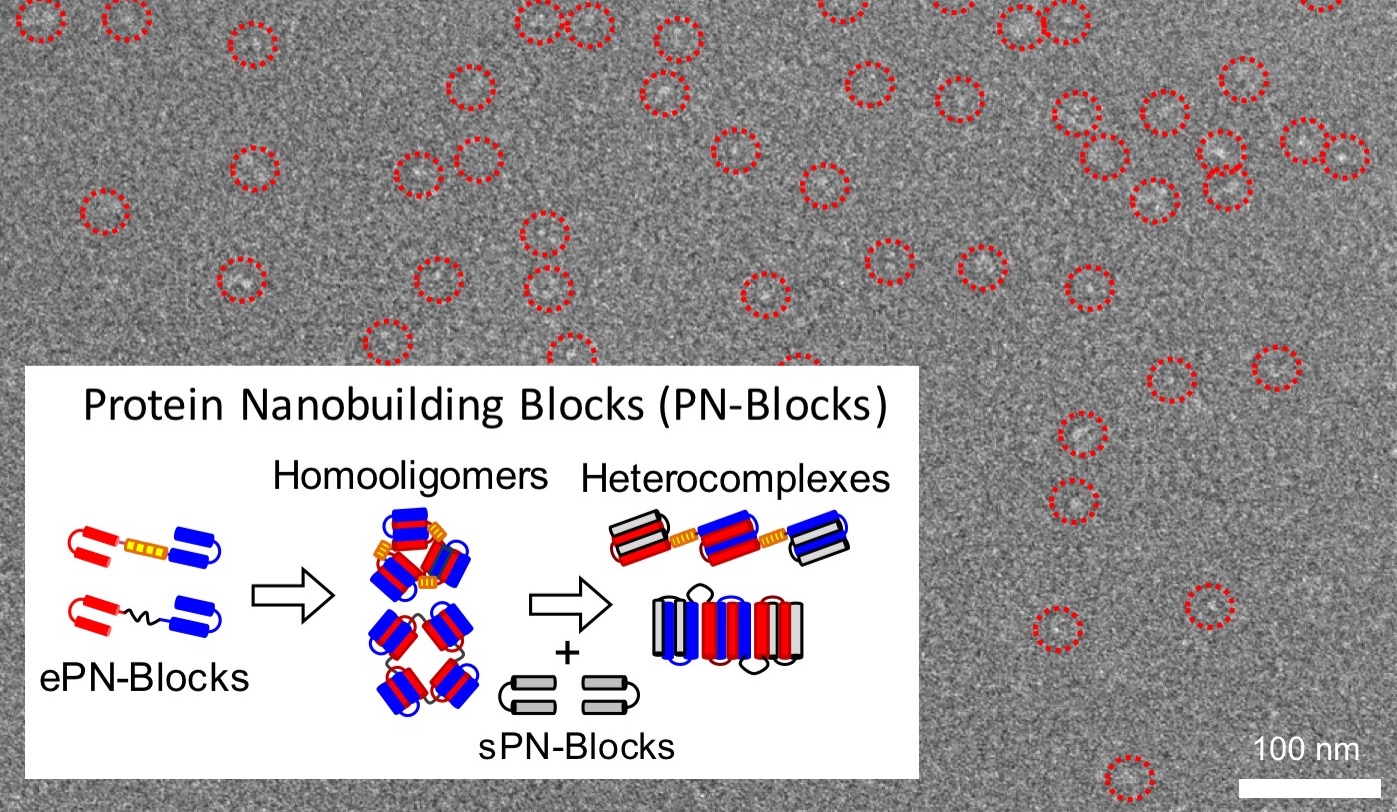Successful construction of self-assembling supramolecular nanostructures from protein nanobuilding blocks
Biomolecules such as proteins, nucleic acids, carbohydrates, and lipids form molecular complexes called "supramolecules" which are formed by self-assembly of various molecules. It is a goal of biomolecular engineering, nanobiotechnology, synthetic biology to design self-assembling molecules as desired.
A research group of Dr. Arai at Shinshu University has designed and developed "protein nanobuiding blocks" using characteristic structures of artificial proteins, and has created diverse supramolecular nanostructure complexes by geometrically combining their symmetrical structures. In this study, we succeeded in designing self-assembling nanostructure complexes by designing new extender Protein Nanobuilding Blocks (ePN-Blocks) in which de novo proteins WA20 are tandemly connected.
It was demonstrated using Native PAGE that ePN-Blocks forms various complexes by self-assembly. In our collaboration with NIPS, these complexes were separated by their sizes and individually observed with a transmission electron microscope. As a result, it became clear that ePN-Blocks forms 15−20 nm nanostructures of "homooligomers" consisting of four, five, or more molecules (Figure). Furthermore, when ePN-Blocks was further mixed with the original WA20 (sPN-Block) protein and refolded, a "heterocomplex" in which two types of protein nanobuilding blocks were reconstructed, the complex was shown that dynamic structural transformation is possible in the heterocomplexes (Figure).
This result shows that the structure of supramolecules can be designed and constructed using protein nanobuilding blocks and it will be possible to design protein supramolecules as desired in the future using this technology.


